History
In February 1943, upon the personal urging of Orson Welles, Stravinsky began work on a short-lived project composing music for 20th Century Fox's Jane Eyre . He copied a number of melodies he had selected from an early 19th century American collection of British folk songs, and began to make notes on the film's scenario. Emerging from this was background music for a hunting scene in the film, which incorporated a sketch the composer had labeled "Song for Bessie." After Bernard Herrmann replaced him in Jane Eyre, Stravinsky recycled this music into what eventually became the "Eclogue" to the Ode. [2] [3] While visiting New York City in April of that year, Serge Koussevitzky presented the composer with a commission for a new orchestral work in memory of his wife, Natalia. Stravinsky's fee would be paid by the conductor's newly established Koussevitzky Foundation. [4] The score was completed in July 1943. [5]
Stravinsky sent the finished Ode to Koussevitzky on July 9. He described the music's first part as "a praise to the departed," and its central section as a "concert champêtre, t[hat] i[s], music at the heart of nature, the principle which [your wife] defended with such passion and which you realized so brilliantly in Tanglewood." Of the closing "Epitaph" the composer said that it was a "headstone inscription ... which will conclude my song in memory of the departed." Koussevitzky replied on July 21 that he was "deeply touched and grateful" for the music. [6]
Two weeks before the score's debut, Stravinsky assured Koussevitzky that the score and parts he had sent for the Ode were "carefully corrected" by him. [7] Nevertheless, a number of errors committed by the music copyists and the composer himself had escaped his notice. [8] The resulting "mild cacophony" [9] heard in the closing moments of its world premiere on October 8, his wife Vera noted, left Stravinsky feeling "sad because [it] was badly played." [10] Although he apologized profusely to Koussevitzky in private for his "ridiculous inattentiveness" in proofreading the Ode, [11] Stravinsky never publicly acknowledged any culpability in the botched premiere. [12]

Sergei Sergeyevich Prokofiev was a Russian composer, pianist, and conductor who later worked in the Soviet Union. As the creator of acknowledged masterpieces across numerous music genres, he is regarded as one of the major composers of the 20th century. His works include such widely heard pieces as the March from The Love for Three Oranges, the suite Lieutenant Kijé, the ballet Romeo and Juliet—from which "Dance of the Knights" is taken—and Peter and the Wolf. Of the established forms and genres in which he worked, he created—excluding juvenilia—seven completed operas, seven symphonies, eight ballets, five piano concertos, two violin concertos, a cello concerto, a symphony-concerto for cello and orchestra, and nine completed piano sonatas.

Igor Fyodorovich Stravinsky was a Russian composer and conductor with French citizenship and American citizenship. He is widely considered one of the most important and influential composers of the 20th century and a pivotal figure in modernist music.

The Rite of Spring is a ballet and orchestral concert work by the Russian composer Igor Stravinsky. It was written for the 1913 Paris season of Sergei Diaghilev's Ballets Russes company; the original choreography was by Vaslav Nijinsky with stage designs and costumes by Nicholas Roerich. When first performed at the Théâtre des Champs-Élysées on 29 May 1913, the avant-garde nature of the music and choreography caused a sensation. Many have called the first-night reaction a "riot" or "near-riot", though this wording did not come about until reviews of later performances in 1924, over a decade later. Although designed as a work for the stage, with specific passages accompanying characters and action, the music achieved equal if not greater recognition as a concert piece and is widely considered to be one of the most influential musical works of the 20th century.
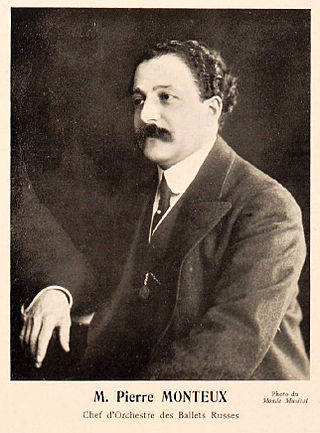
Pierre Benjamin Monteux was a French conductor. After violin and viola studies, and a decade as an orchestral player and occasional conductor, he began to receive regular conducting engagements in 1907. He came to prominence when, for Sergei Diaghilev's Ballets Russes company between 1911 and 1914, he conducted the world premieres of Stravinsky's The Rite of Spring and other prominent works including Petrushka, The Nightingale, Ravel's Daphnis et Chloé, and Debussy's Jeux. Thereafter he directed orchestras around the world for more than half a century.
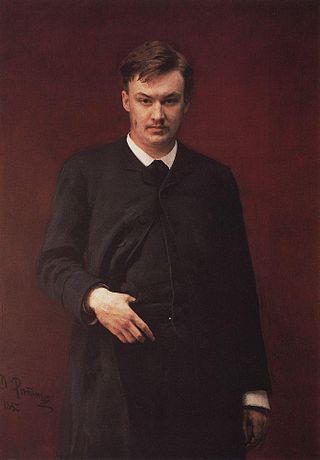
Alexander Konstantinovich Glazunov was a Russian composer, music teacher, and conductor of the late Russian Romantic period. He was director of the Saint Petersburg Conservatory between 1905 and 1928 and was instrumental in the reorganization of the institute into the Petrograd Conservatory, then the Leningrad Conservatory, following the Bolshevik Revolution. He continued as head of the Conservatory until 1930, though he had left the Soviet Union in 1928 and did not return. The best-known student under his tenure during the early Soviet years was Dmitri Shostakovich.

Serge Koussevitzky was a Russian and American conductor, composer, and double-bassist, known for his long tenure as music director of the Boston Symphony Orchestra from 1924 to 1949.

Stuart Oliver Knussen was a British composer of contemporary classical music and conductor. Among the most influential British composers of his generation, his relatively few compositions are "rooted in 20th-century modernism, [but] beholden to no school but his own"
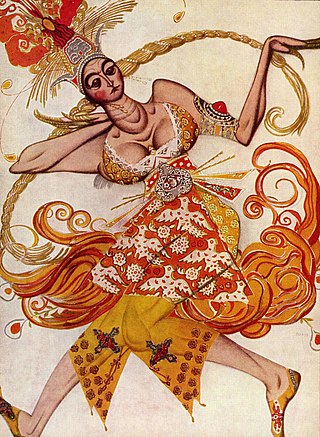
The Firebird is a ballet and orchestral concert work by the Russian composer Igor Stravinsky. It was written for the 1910 Paris season of Sergei Diaghilev's Ballets Russes company; the original choreography was by Michel Fokine, who collaborated with Alexandre Benois and others on a scenario based on the Russian fairy tales of the Firebird and the blessing and curse it possesses for its owner. It was first performed at the Opéra de Paris on 25 June 1910 and was an immediate success, catapulting Stravinsky to international fame and leading to future Diaghilev–Stravinsky collaborations including Petrushka (1911) and The Rite of Spring (1913).
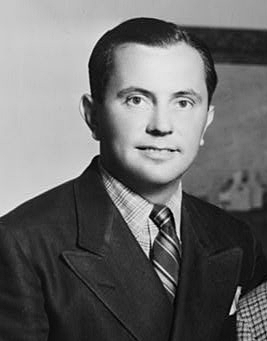
Vernon Duke was a Russian-born American composer and songwriter who also wrote under his birth name, Vladimir Dukelsky. He is best known for "Taking a Chance on Love," with lyrics by Ted Fetter and John Latouche (1940), "I Can't Get Started," with lyrics by Ira Gershwin (1936), "April in Paris," with lyrics by E. Y. ("Yip") Harburg (1932), and "What Is There To Say," for the Ziegfeld Follies of 1934, also with Harburg. He wrote the words and music for "Autumn in New York" (1934) for the revue Thumbs Up! In his book, American Popular Song, The Great Innovators 1900-1950, composer Alec Wilder praises this song, writing, “The verse may be the most ambitious I’ve ever seen." Duke also collaborated with lyricists Johnny Mercer, Ogden Nash, and Sammy Cahn.
Sergei Prokofiev began his Violin Concerto No. 1 in D major, Op. 19, as a concertino in 1915 but soon abandoned it to work on his opera The Gambler. He returned to the concerto in the summer of 1917. It was premiered on October 18, 1923 at the Paris Opera with Marcel Darrieux playing the violin part and the Paris Opera Orchestra conducted by Serge Koussevitzky. Igor Stravinsky made his debut as conductor at the same concert, conducting the first performance of his own Octet for Wind Instruments.
The Wedding, or Svadebka (Russian: Свадебка), is a Russian-language ballet-cantata by Igor Stravinsky scored unusually for four vocal soloists, chorus, percussion and four pianos. Dedicating the work to impresario Sergei Diaghilev, the composer described it in French as "choreographed Russian scenes with singing and music" [sic], and it remains known by its French name of Les noces despite being Russian.
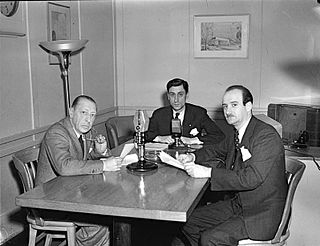
The Symphony in Three Movements is a work by Russian expatriate composer Igor Stravinsky. Stravinsky wrote the symphony from 1942–45 on commission by the Philharmonic Symphony Society of New York. It was premièred by the New York Philharmonic Orchestra under Stravinsky on January 24, 1946.

Igor Stravinsky's Violin Concerto in D is a neoclassical violin concerto in four movements, composed in the summer of 1931 and premiered on October 23, 1931. It lasts approximately twenty minutes.
The Symphonies of Wind Instruments is a concert work written by Igor Stravinsky in 1920, for an ensemble of woodwind and brass instruments. The piece is in one movement, lasting about 9 minutes. It is dedicated to the memory of Claude Debussy, who died in 1918, and was premiered in London on 10 June 1921, conducted by Serge Koussevitzky.

Apollo is a neoclassical ballet in two tableaux composed between 1927 and 1928 by Igor Stravinsky. It was choreographed in 1928 by twenty-four-year-old George Balanchine, with the composer contributing the libretto. The scenery and costumes were designed by André Bauchant, with new costumes by Coco Chanel in 1929. The scenery was executed by Alexander Shervashidze, with costumes under the direction of Mme. A. Youkine. The American patron of the arts Elizabeth Sprague Coolidge had commissioned the ballet in 1927 for a festival of contemporary music to be held the following year at the Library of Congress in Washington, D.C.
Jeu de cartes is a ballet in "three deals" by Igor Stravinsky based on a libretto he co-wrote with Nikita Malayev, a friend of his eldest son Théodore. It was commissioned in November 1935, written late the next year, and premiered by the American Ballet at the old Metropolitan Opera House in New York on 27 April 1937 with the composer conducting. Its European premiere followed on 13 October at the Semperoper in Dresden, where Karl Böhm conducted the Staatskapelle Dresden.
The "Canon on a Russian Popular Tune" is an orchestral work by Igor Stravinsky composed in 1965. It is the composer's final completed score for orchestra and was composed in the summer of 1965 during work on his Requiem Canticles. Although originally intended as a valedictory tribute to Pierre Monteux, the published score makes no mention of this.
The Short Symphony, or Symphony No. 2, is a symphony written by the American composer Aaron Copland from 1931 to 1933. The name derives from the symphony's short length of only 15 minutes. The work is dedicated to Copland's friend, the Mexican composer and conductor Carlos Chávez. The symphony's first movement is in sonata-allegro form, and its slow second movement follows an adapted ternary form. The third movement resembles the sonata-allegro but has indications of cyclic form. The composition contains complex rhythms and polyharmonies, and it incorporates the composer's emerging interest in serialism as well as influences from Mexican music and German cinema. The symphony includes scoring for a heckelphone and a piano while omitting trombones and a percussion section. Copland later arranged the symphony as a sextet.

The Greeting Prelude is an orchestral work composed in 1955 by Igor Stravinsky. Its origins can be traced back to an incident that occurred during a rehearsal at the inaugural Aspen Festival in 1950, when Stravinsky was displeased by a surprise rendition of "Happy Birthday to You", a song with which he was unfamiliar. The next year, at the request of Samuel Barber, he harmonized it and composed a two-part canon as a birthday present for Mary Louise Curtis. In February 1955, Charles Munch, music director of the Boston Symphony Orchestra, contacted Stravinsky with a request for a brief orchestral tribute for Pierre Monteux's 80th birthday. After initially expressing uncertainty that he could accept the commission, he composed Greeting Prelude between February 18 and 23.

Earnest Andersson was an American polymath born to a Swedish immigrant father in Iowa. Childhood illness prevented him from attaining formal schooling beyond the fifth grade. Andersson, a highly precocious child, nevertheless became skilled as a composer, inventor, and painter through a combination of home schooling and auto-didacticism.













